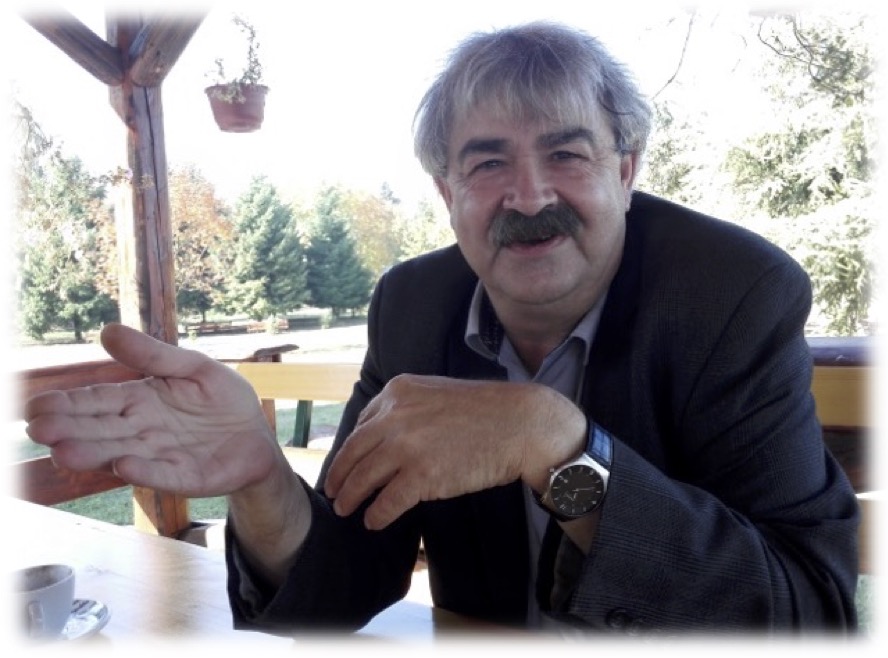Jan Zaanen, 1957-2024

Photographs from Jan's farewell symposium in July 2023.
- in memoriam: english - dutch
- remembrance by Philip W. Phillips (see also Science)
- Volkskrant
On Thursday, Januari 18, 2024, Jan Zaanen passed away after fighting cancer for a year and a half. When confronted with impending death, we humans tend to turn inward and spend our remaining time with our loved ones and closest friends. When I told friends or family about Jan's condition and that we were working together on a last paper, that he was writing a book on the nature of time with Tjerk Oosterkamp and zooming all day with international collaborators, eyebrows were often raised. But to his close colleagues and friends it was perfectly obvious: science was the love of his life and he wanted to spend as much of his remaining time with her as he could.
In the past year, Jan openly reflected on his love life, wondering if it had all been worth it. In his own words: "The reality is, that progress in science is usually incremental, and much of the outcomes of such research is routine, circular, repetitive and only rewarding in terms of citations. Have I contributed ε Einstein to our knowledge?" He meant: have I contributed a very small but eventually finite fraction compared to Einstein's physics legacy?
Jan was not at all certain he had succeeded, but let me convince you that he did. His first claim to fame came in 1985 with a paper that is now widely referred to as Zaanen-Sawatzky-Allen. It solved a problem that had baffled condensed matter physics for decades. The band theory of solids developed in the 20th century accurately predicts the electrical properties of many materials. But for large classes of materials, such as transition metal oxides it fails. ZSA introduced a new theory that solved this problem with a detailed analytical and numerical analysis. It was an instant hit and landed him a post doc job at the Max Planck institute. From this point onwards, Jan was often working a decade ahead of the rest of us. In 1989 he wrote a paper predicting stripes in high Tc superconductors. The story didn't gain much traction, but it was of a theoretical physics level that assured him a coveted position at the famous Bell Labs, where he made many of his life long physics buddies. When stripes were discovered experimentally in 1997 and became a hot topic, Jan had moved on.
With this success still in the future he was desperately looking for a permanent landing spot. In 1993, Wim van Saarloos was instrumental in securing his position at the Institute Lorentz, a fact for which he remained ever thankful. Jan flourished in Leiden. Around 300 papers published, a Spinoza prize, even winning the National Science Quiz. His stature attracted many famous physicists to Leiden as speaker of the Ehrenfest colloquium and as visiting professor on the Lorentz chair.
He coined the idea of "Planckian dissipation" in 2003, which is dominating headlines in Science and Nature 20 years later. Around 2006 he took a break to learn something new: string theory. Together with Koenraad Schalm he spent the next 15 years working on what he believed would revolutionize our understanding of the dynamics of electrons in solids: the AdS/CMT duality. This brilliant dream team was the personification of this duality and together they literally wrote the textbook on it. Koenraad's string theoretical genius perfectly combined with Jan's deep knowledge of dirty materials physics to lay the foundation for a worldwide community of aficionados.
I'm certain that the trend will continue: in 10-15 years maximally entangled quantum matter will reign supreme at meetings worldwide. Most of us arrive at new ideas building on what we read in textbooks. Jan was not afraid to discard those and trust on his unique insight in physics, arriving at new ideas in incomprehensible ways. Sometimes these ideas were completely wrong, but by the time we mere mortals had caught up with his reasoning he had often deftly changed the story and arrived at the correct conclusion. Despite his sometimes undiplomatic style, he pulled in and applauded anyone that could help tackle the next problem. In doing so he influenced the course of condensed matter physics and shaped many careers, not in the least my own. From the first lecture called "quantum field theory for poets" to the paper submitted a few weeks before his death, he was a teacher, mentor and above all a friend.
I want to close with a quote, that many will recognize as his catchphrase: "Nou ja, het verhaal gaat verder", which he used equally frequently in English: "Nou ja, the story continues..." The story of scientific discovery continuous. Unfortunately, from here on without Jan's frequent interruptions. But as we write new chapters of the story, we will reread the ones he wrote and thereby always remember him.
Erik van Heumen